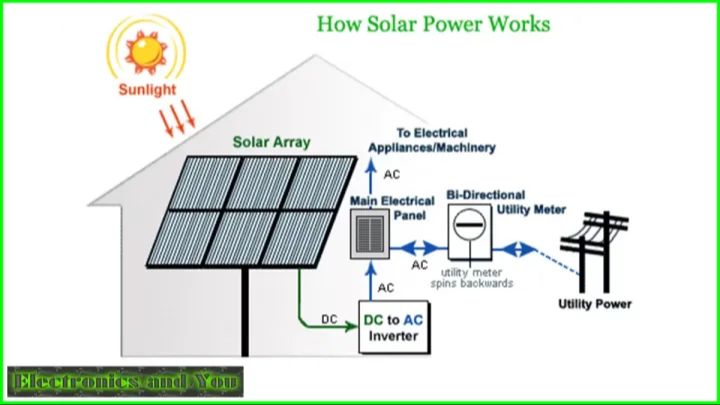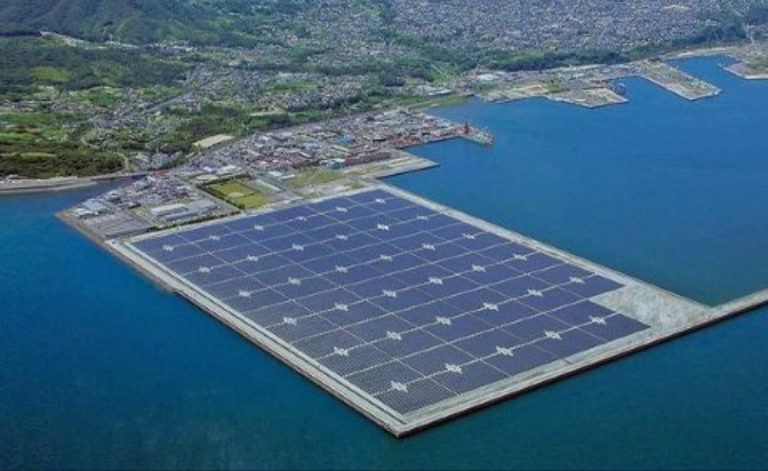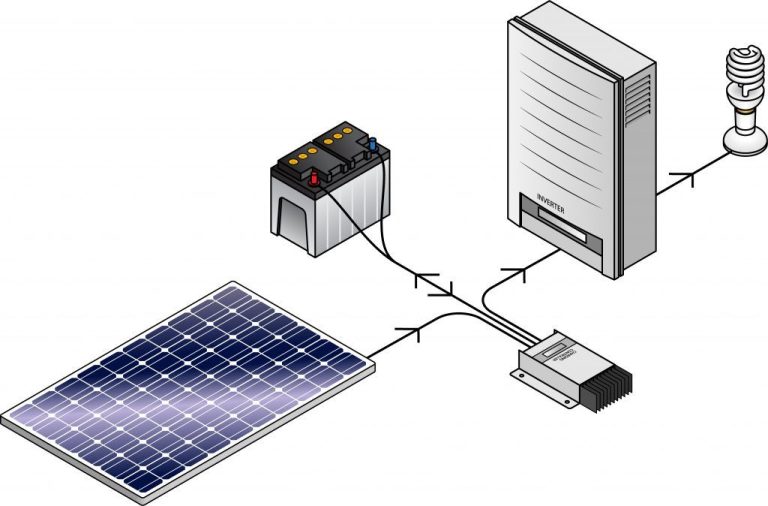What Are Three Ways Radiant Energy Is Used By People?
Radiant energy is the energy of electromagnetic waves. It refers to the energy that travels in the form of electromagnetic waves, like visible light, radio waves, X-rays and gamma rays. Unlike heat conduction or convection, which require particles or matter to transfer energy, radiant energy can transmit energy across empty space.
There are three main ways that people utilize radiant energy: heating and cooking, generating electricity, and enabling chemical processes like photosynthesis. In this article, we will explore how people harness the unique properties of radiant energy for everyday uses.
Heating and Cooking
Radiant energy from the sun can be harnessed in various ways to provide heat for homes and for cooking food. Solar thermal collectors are used to absorb heat from sunlight and transfer it to water or air, which can then be used for space heating or water heating in homes. Solar cookers also utilize radiant heat from sunlight to cook food without the need for electricity or fuels.
Solar thermal collectors come in a variety of forms, such as flat plates, evacuated tubes, unglazed collectors, and concentrated solar power systems. Flat plate collectors are the most common for residential applications. They consist of a dark flat plate absorber, covered with a glass or polymer glazing to trap heat. The heat is transferred to water or a heat-transfer fluid like glycol, which flows through pipes attached to the absorber plate.
Evacuated tube collectors are more efficient than flat plates and consist of multiple glass tubes, each containing a glass outer tube and metal absorber tube attached to a fin. The vacuum between the two tubes minimizes heat loss. Unglazed collectors are used for lower temperature applications like heating pools. Concentrated solar power systems use mirrors to focus sunlight on a central receiver, heating up a thermal fluid.
Solar cookers use reflective surfaces like mirrors or aluminized plastic to concentrate sunlight on a cooking vessel. This allows food to be heated up to 180°C. Different designs include box cookers, panel cookers, and parabolic cookers. Solar cooking is a sustainable way to cook without consuming fuels or electricity. It has been promoted for rural areas in developing countries that lack access to modern energy. With sufficient sun and the right equipment, solar energy can provide for nearly all heating and cooking needs.
Generating Electricity
One of the most common and impactful ways that people utilize radiant energy is through generating electricity via solar panels. Solar panels, also known as photovoltaic cells, are able to convert radiant light directly into electricity through the photovoltaic effect. When photons from sunlight hit the semiconductor material in solar cells, they excite the electrons and allow them to flow freely, creating an electrical current. This electricity can then be used to power homes, buildings, and even feed into the grid to supply broader electricity needs. The modular nature of solar panels allows them to be installed in a wide variety of settings, from small household roof installations to massive solar farms. With solar electricity generation, we are able to take advantage of the abundant radiant energy supplied by the sun and convert it into usable electricity with zero emissions. The falling prices and increasing efficiencies of solar panels have made solar electricity an economically viable and sustainable solution to meet humanity’s electricity needs. With solar power, radiant light energy from the sun is transformed into electrical energy that powers our modern world.
Photosynthesis in Plants
Plants are able to convert radiant energy from the sun into chemical energy through the process of photosynthesis. Inside plants leaves are small structures called chloroplasts that contain the green pigment chlorophyll. When sunlight hits the leaves, the chlorophyll absorbs the radiant light energy which is used to power photosynthesis.
During photosynthesis, plants use the radiant light energy from the sun along with carbon dioxide and water to produce carbohydrates like glucose. The chemical reaction looks like this:
6CO2 + 6H2O + Light Energy → C6H12O6 + 6O2
This process converts radiant energy into chemical energy that the plant stores and uses for growth and reproduction. The oxygen that is released as a byproduct is also essential for most living organisms on Earth. So in summary, photosynthesis allows plants to harness the sun’s radiant energy to synthesize the nutrients they need to thrive.
Vision and Light
Radiant energy in the form of visible light enables animals to see the world around them. Light enters the eye through the pupil and hits the retina, which contains photoreceptor cells called rods and cones. The rods detect brightness and motion, while the cones detect color. These photoreceptor cells convert the light into electrical signals that travel through the optic nerve to the brain. The brain interprets these signals into the images that we see.
Animals have evolved eyes adapted to make use of the visible light spectrum. This allows them to see plants, prey, predators, potential mates, and more in their environment. Vision facilitated by light is crucial for animals to find food, avoid danger, reproduce, and interact. Without the ability to detect light and see, many species would struggle to survive.
In humans and other animals, radiant light energy is not only enabling sight, but also non-visual light perception. Though not fully understood, non-visual effects of light can influence hormone levels, sleep cycles, mood and alertness. The wide reliance on vision and light amongst the animal kingdom demonstrates the immense value of this radiant energy source.
Vitamin D Production
Radiant energy from sunlight plays a critical role in vitamin D production in the skin. When ultraviolet B (UVB) rays from sunlight hit the skin, they interact with a compound in the skin called 7-dehydrocholesterol to produce previtamin D3. Previtamin D3 then goes through a heat-induced transformation to become vitamin D3, which is one of the two major forms of vitamin D found in the body.
Vitamin D is essential for regulating calcium absorption and promoting bone growth and remodeling. It also has various other functions, including modulation of cell growth, neuromuscular and immune function, and reduction of inflammation. Many people are deficient in vitamin D since sunlight exposure is often inadequate. Vitamin D production decreases with age, melanin pigment in the skin that causes darker skin color, sunscreen use, and other factors. Given the importance of vitamin D for health, sensible sun exposure is recommended to maintain adequate levels.
Disinfecting
Radiant energy can be used as a powerful disinfecting agent to kill germs and purify water. The sun’s ultraviolet (UV) rays have natural disinfecting properties that can be harnessed for sanitation.
One example is using UV light to disinfect surfaces. UV-C light is the most germicidal wavelength of light. By installing UV-C lamps in ventilation systems, the exposed light can kill airborne pathogens like viruses, bacteria, and mold spores. Surfaces can also be disinfected using UV wands and boxes that emit concentrated UV-C light to destroy contaminants.
Another application is solar water disinfection (SODIS). Water collected in clear plastic bottles can be purified when exposed to 6 hours of direct sunlight. The UV-A rays damage the DNA of pathogens, rendering them unable to reproduce. This simple SODIS method allows people in developing countries to disinfect water for drinking without using fuel, electricity, or chemicals.
UV germicidal irradiation is an effective use of radiant energy for disinfection and sanitation. Harnessing the innate disinfecting power of sunlight provides sustainable and chemical-free methods of purifying water, air, and surfaces.
Communication
Radiant energy is essential for enabling communication technologies like radio, television, and wireless internet. These technologies rely on the transmission of electromagnetic waves through space to send information. For example, radio signals are a type of radiant energy that can carry audio information over long distances. FM radio stations transmit radio waves between the frequencies of 87.5 to 108 MHz. These waves are picked up by radio receivers, which convert the signals back into soundwaves we can hear. Television also relies on radiant electromagnetic energy in the form of video signals broadcast over certain frequencies, along with audio signals. Likewise, wi-fi internet connections utilize radiant energy transmitted from wireless routers to computers and mobile devices. From AM/FM radio to 5G networks, many forms of modern telecommunication depend on the ability to transmit data via radiant electromagnetic energy through the atmosphere.
Tanning
Radiant energy from the sun or artificial sources like tanning beds allows people to tan their skin. When ultraviolet (UV) rays hit the skin, the skin produces more melanin which darkens the skin resulting in a tan. There are two types of UV rays that are primarily responsible for tanning:
UVA rays – These rays penetrate deep into the skin and cause tanning by oxidizing existing melanin. UVA rays are present in most sunlight and used in tanning beds. They cause immediate tanning but can also lead to skin damage and aging over time.
UVB rays – These rays affect the outer layers of skin and trigger the body to produce more melanin. UVB exposure causes delayed tanning but can burn the skin if exposure is excessive. Most natural sunlight contains UVB rays, but they are less present in tanning beds.
Both UVA and UVB exposure allow the skin to tan as a natural defense mechanism against further sun damage. The increased melanin acts as a natural sunscreen to protect deeper skin layers. Tanning bed use artificial UV lamps to mimic this natural tanning process.
However, overexposure to UV rays raises skin cancer risk. Moderation is key whether tanning under natural sunlight or artificial lamps. The tan indicates damage has occurred, so care should be taken to avoid burning or over-tanning which multiplies damage.
Conclusion
Radiant energy from sources like the sun has many important uses for people. This article covered three key ways we utilize radiant energy:
First, radiant energy is used for heating and cooking through technologies like solar thermal collectors that concentrate sunlight to generate heat. This renewable source of energy can be used to warm buildings, heat water, and cook food.
Second, radiant energy from the sun is converted into electricity through solar photovoltaic panels. Solar PV systems generate clean, renewable power by converting sunlight into direct current electricity.
Third, plants use radiant energy from the sun through the process of photosynthesis. Radiant energy drives photosynthesis, allowing plants to convert carbon dioxide and water into sugars and oxygen.
In summary, radiant energy from the sun has many critical applications for people, including heating, electricity generation, enabling plant growth, and more. As a free and abundant renewable resource, radiant energy will continue to provide benefits to humankind into the future.






